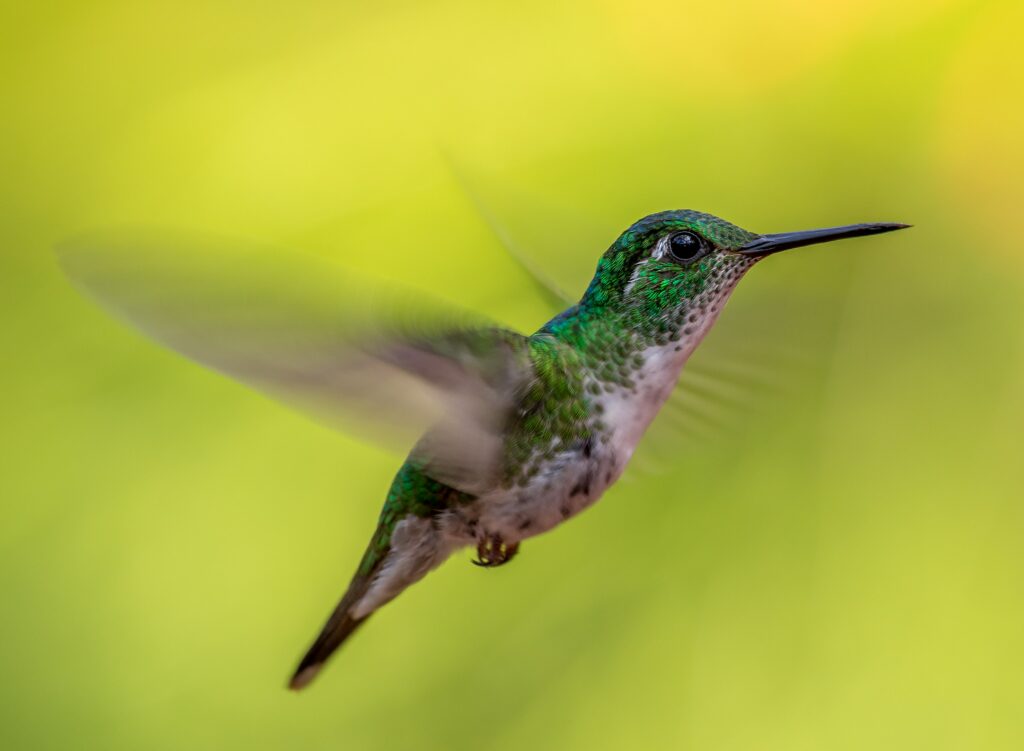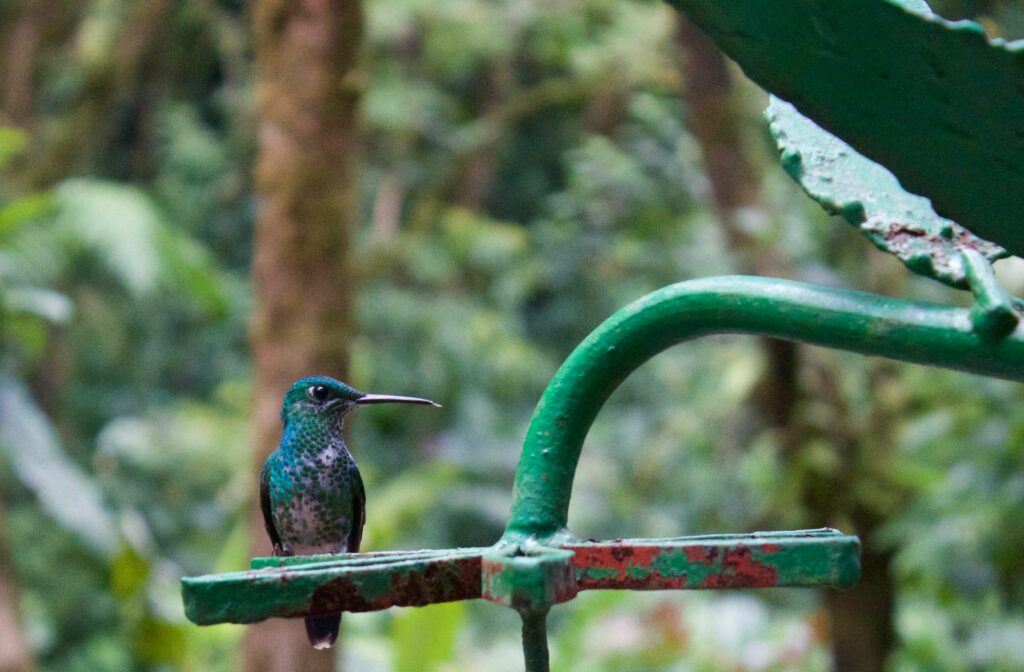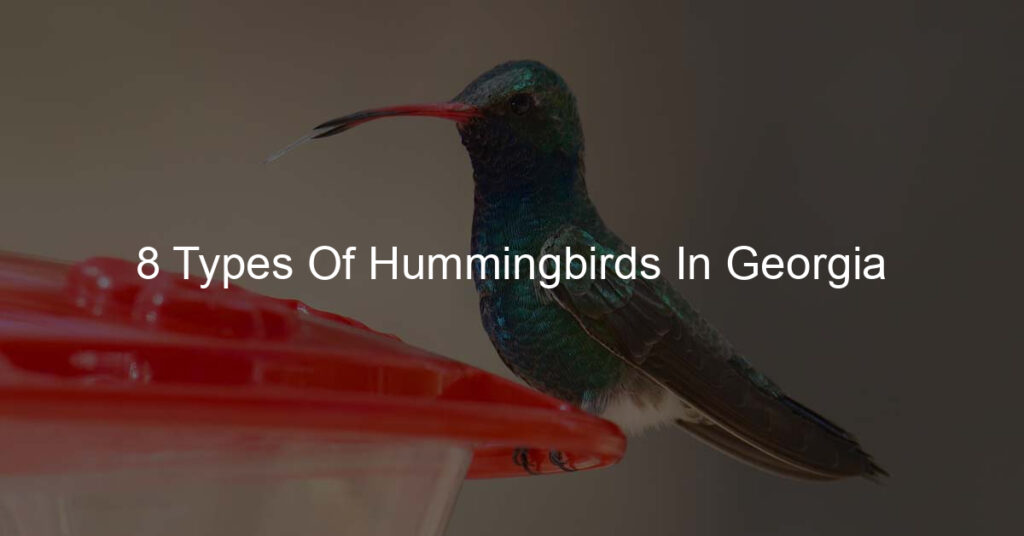Do you love the beauty of hummingbirds? Are you looking to experience them up close and personal in Georgia? You’re in luck because some of the most beautiful species of hummingbirds can be found in this southern state! Here, we will provide an overview of eight different types of hummingbirds found in Georgia that you can look for if you take a birdwatching journey. From rare and elusive species to more commonly seen varieties, explore types of hummingbirds in Georgia and learn about their behaviors and habitats.
Overview Of Hummingbirds In Georgia
Hummingbirds are some of the most beloved backyard birds throughout the United States, especially in Georgia where there are 8 distinct hummingbird species that can be seen all year round or during their migratory season. In this article, we will take a closer look at each of these eight types of hummingbirds in Georgia and discuss how to attract them to your backyard.
8 Types Of Hummingbirds In Georgia
- Ruby-Throated Hummingbird
- Rufous Hummingbird
- Broad-Tailed Hummingbird
- Calliope Hummingbird
- Allen’s Hummingbird
- Costa’s Hummingbird
- Anna’s Hummingbird
- Broad-Billed Hummingbird

Learn More: What Do Baby Hummingbirds Look Like?
1. Ruby-Throated Hummingbird
The ruby-throated hummingbird is the only species of hummingbird that can be found in Georgia year-round and is one of the most common hummingbird species throughout North America. They are small, colorful birds with a green back, white throat, and a forked tail. They have a long, thin bill for extracting nectar from flowers and are often seen at backyard feeders in the summer months.
Behavior And Habits
Ruby-throated hummingbirds are active year-round in Georgia and during their migratory season will travel to Mexico or Central America to spend the winter. They are most active during the day and seek out flowers for nectar, and insects for protein and use bird feeders to supplement their diet when food is scarce.
2. Rufous Hummingbird
The rufous hummingbird is a small but vibrant species of hummingbirds seen throughout the United States and Canada during their migratory season in late summer and fall. They have a copper-red back and chestnut underside, long bill, and tail feathers that extend beyond their body length when perched. Male rufous hummingbirds can be distinguished from females by their brilliant orange throat patch while female rufous hummingbirds have a grayish-green throat patch.
Habitat And Migration Patterns
Rufous hummingbirds are seen throughout the United States during their migratory season from April through October and typically nest in conifer forests in the Pacific Northwest and Canada. They prefer habitats with plenty of flowers for nectar and insects for protein and will frequent backyard bird feeders when available. They are active during the day but may rest overnight on branches or even inside homes.
Learn More: How Often Do Hummingbirds Eat?
3. Broad-Tailed Hummingbird
The broad-tailed hummingbird is a stunning species of hummingbird found mainly in western North America during its migratory season from May through October. They have a bright green back and white underside, long forked tail, and a red throat patch that is highlighted with metallic purple feathers.
Habitat And Migration Patterns
In recent years, there has been an increase in the number of broad-tailed hummingbirds being spotted in Georgia, especially by birders during their migratory season. These sightings are rare but have increased as more people become aware of these beautiful birds.
Learn More: 8 Types Of Hummingbirds In Utah
4. Calliope Hummingbird
The calliope hummingbird is the smallest species of hummingbird found in North America, measuring only three inches in length with a wingspan of four inches. They have a greenish-brown back, white underside, and long forked tail. The male calliope hummingbird can be distinguished from the female by its bright red throat patch while the female has an iridescent magenta throat patch.
Habitat And Migration Patterns
Calliope hummingbirds are seen mainly in western North America during their migratory season from April through October. They prefer high-elevation habitats such as conifer forests and will frequent backyard bird feeders when available to supplement their diet of nectar and insects.
5. Allen’s Hummingbird
The Allen’s hummingbird is a small but vibrant species of hummingbird found mainly in western North America during their migratory season from February through October. They have a bright green back and white underside, a long forked tail, and a copper-red throat patch that extends from the chin to the chest. Male Allen’s hummingbirds can be distinguished from females by their distinctive orange throats while female Allen’s hummingbirds have pale pink throats.
In recent years, there has been an increase in the number of Allen’s hummingbirds being spotted in Georgia, especially by birders during their migratory season. These sightings are rare but have increased as more people become aware of these beautiful birds.
Habitat And Migration Patterns
Allen’s hummingbirds are seen mainly in western North America during their migratory season from February through October and will frequent backyard bird feeders when available to supplement their diet of nectar, insects, and spider webs. They prefer low-elevation habitats such as chaparral woodlands and coastal scrub habitats with plenty of flowers for nectar. They are active during the day but may rest overnight on branches or even inside homes.
Learn More: When Do Hummingbirds Arrive In Massachusetts?

6. Costa’s Hummingbird
The Costa’s hummingbird is a stunning species of hummingbird found mainly in the southwestern United States and northwestern Mexico during their migratory season from March through October. They have a bright green back, white underside, long forked tail, and a distinctive magenta throat patch with iridescent violet feathers at the base. Male Costa’s hummingbirds can be distinguished from females by their purple throats while female Costa’s hummingbirds have pale pinkish throats.
Habitat And Migration Patterns
Costa’s hummingbirds are seen mainly in the southwestern United States and northwestern Mexico during their migratory season from March through October and prefer low-elevation habitats such as deserts and scrublands with plenty of flowers for nectar. They are active during the day but may rest overnight on branches or even inside homes to conserve energy. When available, they will visit backyard bird feeders to supplement their diet of insects and spiders.
7. Anna’s Hummingbird
Anna’s hummingbird is a beautiful species of hummingbird found mainly in western North America during their migratory season from January through October. They have a bright green back, white underside, long forked tail, and a distinctive rose-pink throat patch highlighted with metallic purple feathers. Male Anna’s hummingbirds can be distinguished from females by their pink throats while female Anna’s hummingbirds have pale gray throats.
Habitat And Migration Patterns
Anna’s hummingbirds are seen mainly in western North America during their migratory season from January through October and prefer low-elevation habitats such as chaparral woodlands with plenty of flowers for nectar. They are active during the day but may rest overnight on branches or even inside homes to conserve energy. When available, they will visit backyard bird feeders to supplement their diet of insects and spiders.
8. Broad-Billed Hummingbird
The broad-billed hummingbird is a colorful species of hummingbird found mainly in the southwestern United States and northern Mexico during their migratory season from March through October. They have a bright green back, white underside, long forked tail, and a distinctive purple throat patch with iridescent blue feathers at the base. Male broad-billed hummingbirds can be distinguished from females by their deep purple throats while female broad-billed hummingbirds have pale pinkish throats.
Habitat And Migration Patterns
Broad-billed hummingbirds are seen mainly in the southwestern United States and northern Mexico during their migratory season from March through October and prefer low-elevation habitats such as chaparral woodlands with plenty of flowers for nectar. They are active during the day but may rest overnight on branches or even inside homes to conserve energy. When available, they will visit backyard bird feeders to supplement their diet of insects and spiders. They also build nests made of spider webs, lichen, and leaves.
Learn More: 8 Types Of Hummingbirds In Maryland
Conclusion
Many species of hummingbirds are found in various areas of North America, and each has its distinctive characteristics. They all prefer low-elevation habitats with lots of flowers for nectar, and many can be seen visiting backyard bird feeders to supplement their diet. Hummingbirds are active during the day but may rest overnight on branches or even inside homes to conserve energy.
In addition, they all build nests made from spider webs, lichen, and leaves to protect their eggs and young chicks. Knowing the description, habitat, migration patterns and nesting habits of these beautiful birds will help ensure that they thrive in our environment for generations to come.







